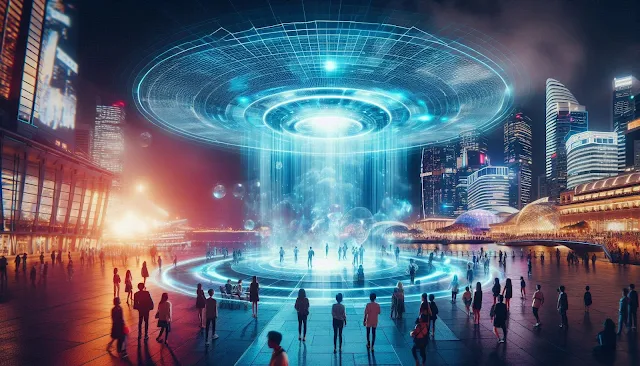The holographic era is emerging as a powerful tool in the live events industry, revolutionizing how audiences enjoy entertainment, training, and communication. From live concerts to corporate meetings, holograms are blending the digital and physical worlds, raising the question: will they redefine live events?
Enhancing Live Performances
Holograms have already made a significant impact on music and entertainment. Iconic artists like Tupac Shakur and Whitney Houston have been "brought back to life" through holographic projections, delivering realistic performances that captivate audiences. These 3D projections add a new dimension to live concerts, allowing artists to perform in multiple locations simultaneously, effectively expanding their reach and reducing logistical challenges.
The immersive nature of holograms enhances creative storytelling, enabling performers to interact with digital environments and characters on stage. For fans, this creates a surreal experience that blends artistry with modern technology.
Corporate and Educational Applications
Beyond entertainment, holograms are transforming corporate events, product launches, and educational lectures. Business leaders can now "beam" into conferences as holograms, eliminating the need for physical travel while maintaining a personal presence. Similarly, educators can deliver engaging, interactive lessons using holographic displays to illustrate complex concepts in science, history, and art.
Expanding Accessibility
Holographic technology can make live events more inclusive and accessible. For example, individuals unable to attend due to geographical or financial constraints can experience genuine holographic events from their locations. This democratization of live experiences can break down barriers and foster global connections.
.jpeg)
Challenges and Considerations
Despite its potential, the widespread adoption of holograms faces challenges. High production costs, advanced equipment, and the need for specialized venues currently limit accessibility. Additionally, questions about authenticity arise—can a hologram truly replicate the emotional impact of a live human presence?
Technical obstacles, such as latency and visual quality, must also be addressed to ensure seamless experiences. However, advances in 5G and AR/VR technologies are gradually overcoming these hurdles.
The Future of Live Events
Holograms are unlikely to replace traditional live events but will instead supplement them, offering new ways to engage audiences. Hybrid models that integrate in-person and holographic experiences may become the norm, blending the intimacy of live performances with the global reach of digital technology.
In conclusion, holograms are poised to redefine live events, pushing the boundaries of creativity, accessibility, and interactivity. As technology evolves, these 3D projections are likely to become an integral part of our cultural and professional landscapes.

.jpeg)
.jpeg)

.jpeg)

-fotor-202410249146.png)

